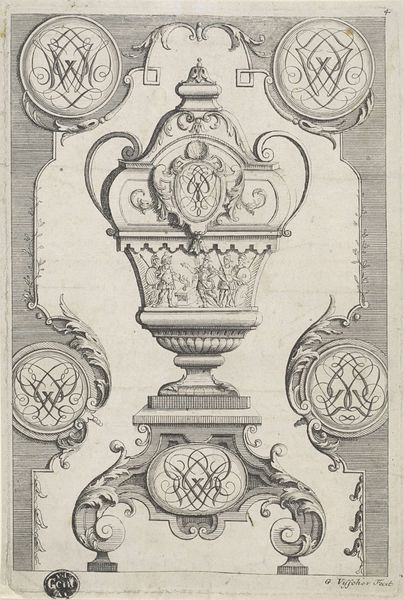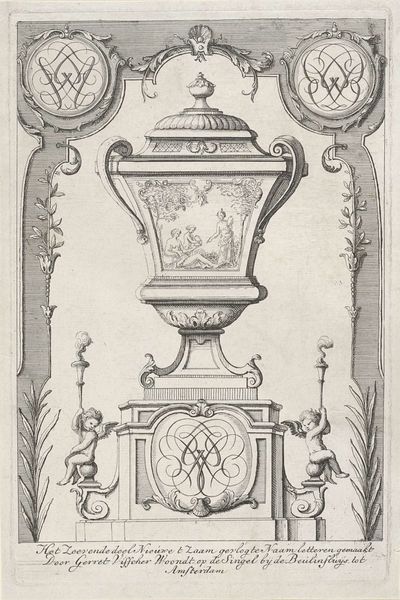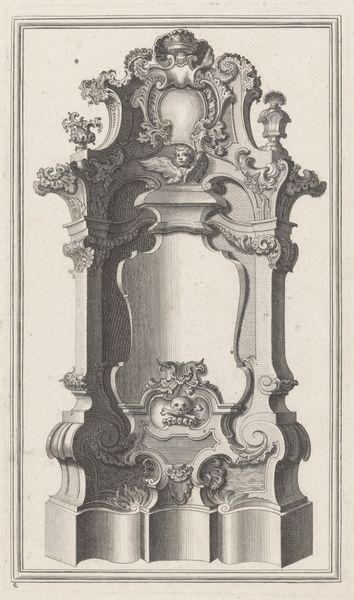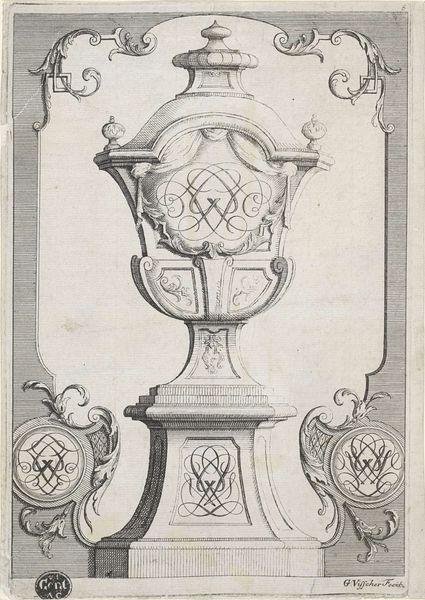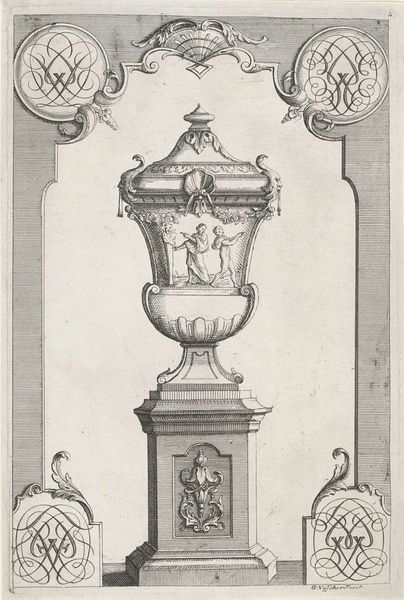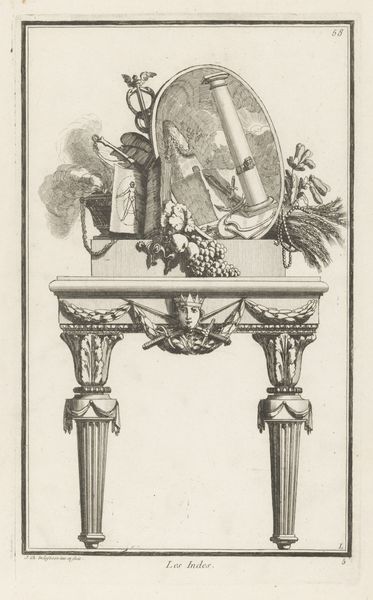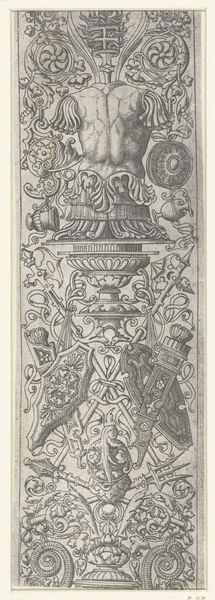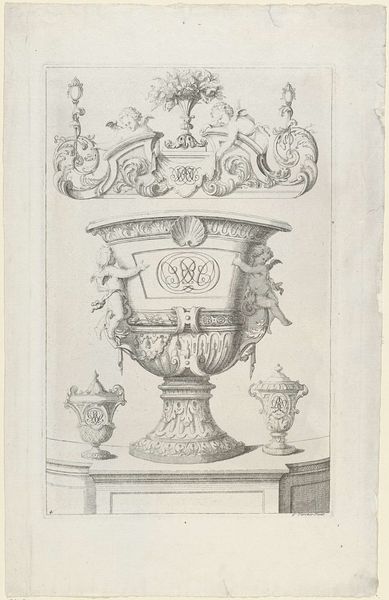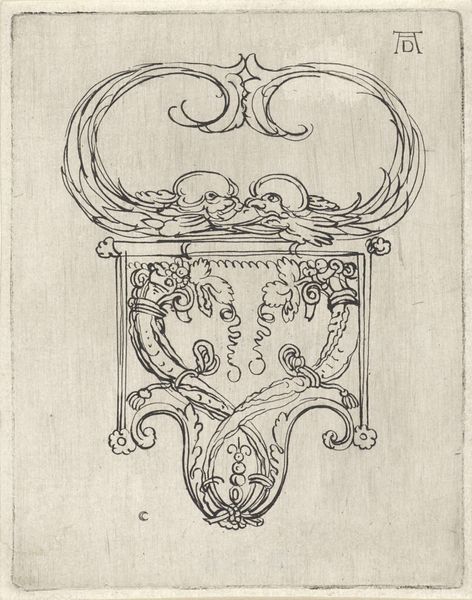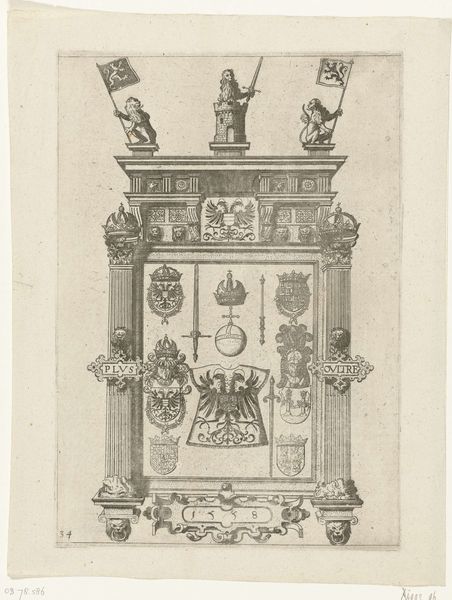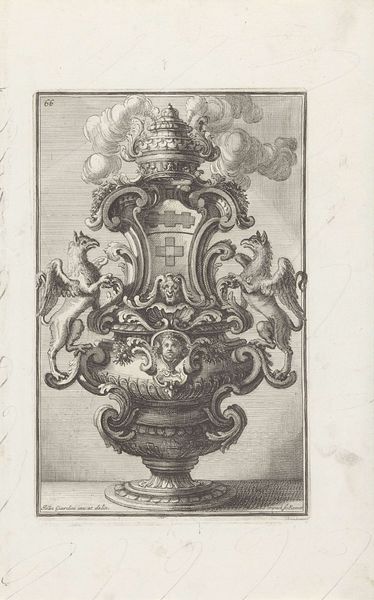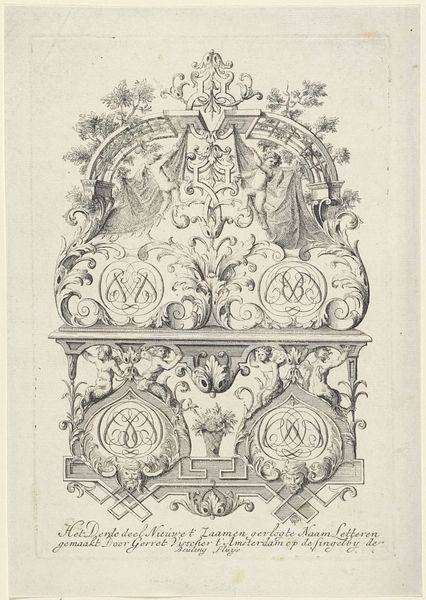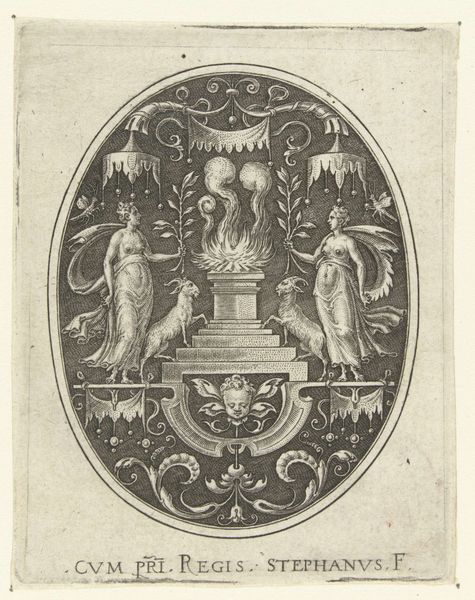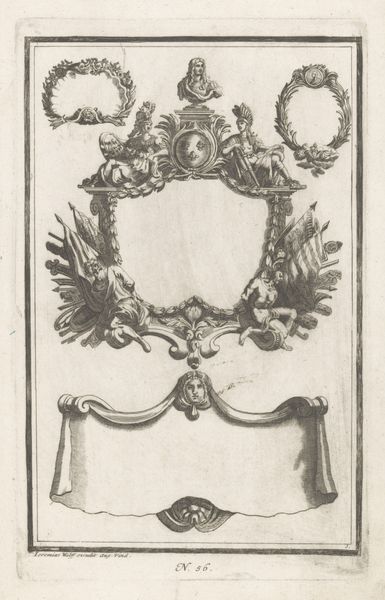
print, engraving
#
baroque
# print
#
pen sketch
#
old engraving style
#
pen-ink sketch
#
pen work
#
engraving
Dimensions: height 253 mm, width 168 mm
Copyright: Rijks Museum: Open Domain
Editor: This engraving, "Panel with Garden Vase with Satyrs and Monograms in the Corners," created by Gerrit Visscher between 1690 and 1710, showcases incredibly detailed linework. The vase itself seems to depict playful satyrs. What's striking to me is how this print elevates a functional object—a garden vase—to a work of art. What stands out to you about this piece? Curator: From a materialist perspective, this piece intrigues me. Engravings like this served as vital tools for disseminating designs and influencing tastes in the late 17th and early 18th centuries. The print wasn’t merely a representation; it was an active participant in shaping the material culture of the Baroque period. Consider the labor involved: the skilled engraver meticulously transferring an image onto a copper plate, allowing for mass production and wide distribution. Where do you think these designs would have been most impactful? Editor: Probably influencing wealthy patrons designing their gardens and commissioning actual vases! I imagine this kind of print democratized design ideas, spreading new aesthetic trends. The act of replicating the design for a garden would create new job opportunities for stonemasons, gardeners, metalworkers and boost other areas of material production. Curator: Exactly! The circulation of these prints fuelled specific sectors of production, showcasing the interwoven nature of art and industry. This wasn't just about aesthetics; it was about material production, social aspiration, and the reinforcement of class structures. Think about the paper it's printed on, too, and the origins of that material in the wood industry! Editor: That makes me think about the environmental cost as well, of course. Thanks for this analysis! I never would have considered all those industrial facets on my own! Curator: Understanding the material origins and production processes brings a crucial lens to understanding the artwork’s meaning and cultural impact.
Comments
No comments
Be the first to comment and join the conversation on the ultimate creative platform.
